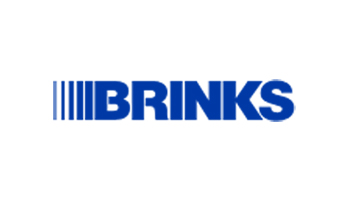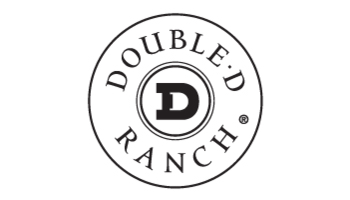As small business owners, we’re always looking for new ways of attracting clients and building our brand/business. And to be honest, there’s never a bad time to think about marketing ideas. Being engaged in your brand, clients, products, and doing your best to improve those areas is one of the best things that you can do to boost your sales.
Focusing on areas that aren’t performing well is also another key to success. Maybe you’re not getting enough feedback on your messages like you have in the past. Perhaps you’re not meeting your “new client” target goals anymore. Or maybe you feel like your business seems to be stagnant. So how do you optimize your business again and make it feel exciting again? Well, whether you’re brand new to the world of small business or an established veteran, there are plenty of marketing ideas and tips out there that will help.
And even if your business is chugging along at full speed, these tips will also help you keep your brand and company fresh and engaging.
1. Establish a Cleaning Schedule

No, I’m not talking about sweeping and dusting your brick or mortar (or desk area if you’re working from home). While you should be doing that already, what I’m talking about is data cleaning.
Chances are you’re probably already practicing this… But the problem is that you’re likely only cleaning that data once a year. And while that’s definitely a good start (cleaning once a year is better than never at all), it should be something that you do far more often. And in fact if you’ve been neglecting your database cleaning duties, your marketing strategy may be suffering.
“According to studies, 72% of companies feel that data quality issues directly effect both consumer perception of their business as well as trust.” That’s a pretty significant number obviously.
Also in the same study, about 44% of companies trust their own data enough to make decisions regarding their business. That’s definitely a lost opportunity.
But how does being lazy with data cleaning affect decision making? Well, when you think about it the answer becomes pretty obvious. Successful marketing strategies should come from your data.
Consider this:
You’re looking at your data and according to it, email marketing has been incredibly successful for you. 20% of your clients come from this. So given the data, you should invest more in email marketing. Simple, right? But if your data is old you might be getting inaccurate information and thus be spending money in areas that aren’t profitable. Cleaning out old data and looking at current numbers may reveal something completely different. Perhaps social media presence is now where 20% of your clients but you’d never know unless you’re purging old data. And if you’re trusting that old data, you’re funneling money into something that isn’t really benefitting you anymore.
So the moral of the story? Clean your data monthly!
2. Understand Your Audience

When it comes to crafting marketing ideas that will be successful for your small business, you need to think extensively about your audience.
Before you invest in any type of marketing, ask yourself these questions:
- Who is your audience?
- What does your audience do?
- How can you help them do that better?
By now you should know that your products/services aren’t for everyone. There are people out that simply won’t benefit from what you’re selling. And there’s nothing wrong with that. But you shouldn’t spend money or time marketing to the people that don’t fit what you’re offering. This is why it’s important to identify your audience.
Perhaps your product is an all-natural weight loss supplement for women for over 30. Sure, you could in theory market this product to younger women, but it’s not really meant for them. And honestly, you’d be wasting valuable resources trying to sell your product to them. So identify for your audience (who your products are really for) and center your marketing around them.
You also need to consider what your audience does for a living. 30+ women who are working a 40 hour week with little time (and desire) to exercise will definitely benefit from your supplement. But women in this same age demographic who are working from home or are more active won’t get the same benefits from your product. Assuming of course this supplement is designed to replace the need for a heavy workout routine. Now if the opposite is true and it’s meant to boost their workouts, then the latter demographic is who you need to target. Make sense?
Now obviously your supplement can help them depending on what demographic your product is designed for.
But what if you’re not selling a product but rather a service? Well, the same info still applies. Say you’re a freelance writer. Well, your audience will be those who need content written, their websites edited, blogs managed, etc. And those are the people that you should focus on selling your services to. Small personal bloggers won’t benefit from your services; they’re already managing their own blogs. But those seeking ghostwriters or looking to expand their blogs with more content will benefit from what you’re peddling. Those who aren’t very good at writing or whose first language isn’t English will also benefit from your skills. You can take their content and make it better. Make sense? 🙂
Simply put, buyer personas are going to be instrumental in defining who your audience is; especially in regards of interests, demographics, jobs, responsibilities, needs, etc. If you’re able to accurately identify for your audience, you can easily figure out your target and a direction to take both your business products and your marketing strategies.
“Also, don’t neglect taking a funnel position into consideration when you’re coming up with buyer personas. You need to tailor your messages in a way to account for different personas. For example, a customer that requires a more nurturing touch will benefit from a message that’s different from someone who is ready to buy your products. You need to have conversations at the appropriate times to be sure that you aren’t arriving too late, too soon, and you’re giving them what they need.
3. Keep Your Content on Target

When you understand your audience, it’s a lot easier to come up with content that is relevant and valuable. As stated, you shouldn’t be publishing content just to fill spaces or come off as someone who has a lot to say. If your business is dedicated to helping people travel for cheap, then focus your content on that topic and around it. Don’t publish stuff like “10 of the Most Expensive Suites to Stay in Around the World”. Sure, it’s travel related but your company is about saving money, not spending it on lavish travel accommodations. In other words, stay in your lane!
Let’s also take a moment to talk about clickbait and sales pitches. These things are EVERYWHERE; especially clickbait. “10 Ways to Lose Weight without Dieting; You Won’t Believe how Easy #5 is!” These were really popular methods of marketing and getting views on posts, but they’ve become cliche and hated. Clickbait and sales pitches aren’t going to get you more views and they’re definitely not good at establishing trust between you and your audience.
So how do you rope customers in if you’re not trying to sell them or appealing to their curiosity through clickbait? By appealing to them on a more personal level. You want to show potential clients that you not only understand them as individuals, but that you care about their wants and needs. So instead of constantly pushing your product (if it’s good, it’ll stand on its own merit), focus instead of providing information, valuable insights, and even entertainment to your audience. Even though you’re not actively putting your products front and center, this is a much more effective way of leading potential clients down the path to your buying what you’re selling.
Want to know more about how content marketing helps your business? Check out this link!
4. Optimize Your Emails!

A lot of people feel like they get far too many emails and far too much spam. And based on your own experiences, you probably feel the same about your own inbox. Chances are you’re tired of getting all of those wonky emails that say things like “[Your Name or Email] click here for more information!” “[Your Name or Email] click here for savings!” “We received your request [Your Name or Email] and we’re happy to have you on board!” In other words, we’re all tired of spam.
But there’s a big difference between those emails and sending out emails about the latest regarding your business/products. Did you know that 86% of consumers prefer email when it comes to business communications? And did you know that most of those also like to know what’s up with your business? Think about the emails you get from your favorite clothing brand. Sometimes they send emails letting you know about new products and other times it’s regarding deals they’re offering. Personally speaking from a consumer standpoint, I love those emails! They’re pretty infrequent and they’re a good way of helping me keep up with what’s going on with a company I like. And chances are you feel the same. So, why wouldn’t your clients appreciate the same?
Email marketing can be incredibly tricky though. You want to avoid spamming your clients but you also want to keep them up to date. You also want to provide great content such as newsletters or articles that are helpful, but just because it’s well written and valuable doesn’t necessarily mean that they’re going to open the email. However, the chance that some won’t open your email isn’t a reason to quit email marketing or shy away from it.
There are a lot of tips out there for email marketing, but I’ll cover some quickly:
- Do weekly or biweekly emails; never daily
- Don’t be pushy in your emails or over the top with sales pitches
- Respect your client’s inbox: use it for updates and helpful content, not spam
- Keep the emails short and sweet: 1000 words or less. Nobody wants to spend time reading a novel
- If you want to offer them more info, provide a link to your content page so they can read it at their own discretion
Outbound Engine is a great email marketing source if you need more help.
5. Social Media is Your Friend

Social media has become the “it” thing over the last couple of years when it comes to marketing products/businesses. There are so many people on social media platforms and it’s easy to reach mass amounts of people with very little effort on your end. These platforms also provide a lot of networking potentials.
However, the algorithms of social media are always changing and it can be a headache to keep up with the newest trends/changes. And obviously, a lot of these updates make it harder for businesses to gain footholds organically. For example, hashtags on Instagram used to be all you need to attract business. You use the right hashtags (and enough of them) and you’re golden. Now, Instagram has changed the importance and impact of this trend. Thus, it’s harder to reach new clients on this platform using hashtags alone. So what’s a business owner to do?
Well, this where paid advertisements and boosted posts come into play. Sorry folks, but you gotta spend money to make money and that’s not changing anytime soon!
But how effective is this paid advertisement exactly and is it worth it? The short answer is that it’s very effective and it’s definitely worth. According to research, paid ads are predicated to generate over $18 billion in revenue in 2019. That’s huge! Especially considering the fact that you really don’t need to shell out a fortune to get your content seen. Almost every platform offers a variety of advertisement and boost packages so you can pick the one that best fits your budget.
Need more convincing? In 2016, 76 percent of B2C content marketers in North America took advantage of promotion tools/posts. 61% reported that their posts were effective. Social advertisements ranked a bit lower, with 74% of the content marketers taking advantage of them. 59% reported that they were effective.
These are really, really good numbers obviously.
If you need a quick, dirty guide to introduce you to the “pay to play” world of social advertising, check out these links:
6. Visual Marketing is the Future

You know the saying “a picture is worth a thousand words?” Well, it’s true! Visual content is one of the fastest growing trends and as each year passes, it continues to grow in popularity. Think back a few years to Facebook and Instagram. Facebook was all about statuses and moods. It was all words. Instagram was in its infancy and nobody really used it. Fast forward and now Facebook no longer centers around words; instead, memes, images, and videos are shared across the board. And Instagram now stands with Facebook in popularity ranks.
Did you know that the human brain processes images 60 times faster than words? This is one of the reasons why images and videos are so popular right now. There’s also the fact that they’re more attractive, engaging and you can fit a lot more information into a “smaller space” using videos/images than you can a lengthy article. And honestly, not everyone has the time (or desire) to sit down and read a 2000-3000 word post. But if you condense the highlights into a 5 minute video, well, suddenly there’s time. And arguably it’s more interesting.
So if you’re looking for marketing ideas, look into visual content; especially video content.
Snapchat, Instagram Stories, Facebook Live, Facebook Stories, and YouTube are growing rapidly in popularity. And customers are eating it up. They like the fact that they can see the “face behind the business” in video and that they can also easily digest a lot of information without staring at a white wall of black text.
Interested in starting your first video? Cool! Here’s a few tips:
- Keep it under 2 minutes
- Give a quick introduction about yourself
- Make it informative, but engaging
- Consider adding captions to your videos instead of focusing solely on audio (around 85% of videos are watched without sound)
It might feel weird adding text to your videos, but think about how many people are scrolling through social media when they come across a video. Many just watch it on the smaller preview screen instead of actually clicking the video so it’s silent. Others are at work, traveling, or somewhere where it’s not easy to watch the video with the sound on.
Did you know that Hubspot found that 72% of people prefer video when it comes to learning about a product/service/business? Well, you do now so take advantage of this info!
TLDR; visual content is in and that’s not changing anytime soon.
7. Don’t Neglect Your Reviews

You probably know that consumers have a lot of power when it comes to their online reviews. More and more people are looking at reviews before purchasing a product, visiting a store/restaurant, etc. We all value the opinions of others as consumers so these reviews become incredibly important.
The importance of reviews and the thought of negative feedback can be overwhelming; especially when the reviews are just plain nasty. However, they’re incredibly valuable and even the nasty ones can offer some valuable insights.
If you haven’t already, check out our post on dealing with negative reviews. In this post, we talk about how to deal with negative reviews as well as clients who just can’t be satisfied.
As a final piece of advice, make sure that you’re not only checking your online reviews often, but that you’re also asking consumers for them as well. Even if a product is really, really good many of us forget to leave our reviews about the place online. A gentle reminder is all your clients need.
Bonus Tip: Automate what You Can

In the beginning, it might be easy for you to do everything organically/by hand/by yourself. But as your business grows and as you expand your reach to multiple other platforms, it can be difficult to keep up.
It can also eat away at your time and you may find yourself investing far more attention in marketing your business than you are in actually running it.
Thus, I recommend automating what you can.


















